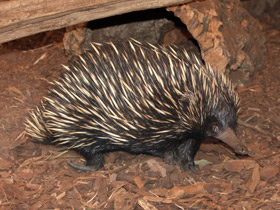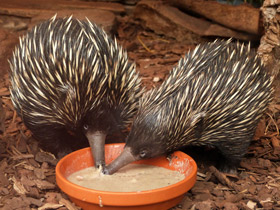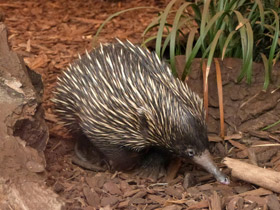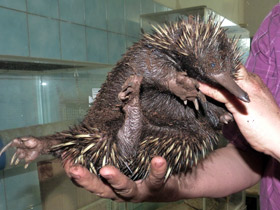The short-beaked echidna or the short-nosed echidna (Tachyglossus aculeatus lawesii)
The short-beaked echidna (Tachyglossus aculeatus lawesii), also called the short-nosed echidna, is one of four living species of echidna and the only member of the genus Tachyglossus.
The short-snouted echidna's diet consists of ants and termites. It is covered with hair and spikes, and has a distinctive snout and a specialised tongue for hunting prey at high speed. Like all living monotremes, the short-snouted echidna lays eggs; monotremes are the only group of mammals to do so.
This species lives throughout Australia, where it is the most widespread native mammal, and in coastal and upland regions of southwestern New Guinea, where it is known as mungwe in the Dadibi and Chimbu languages. It is not threatened with extinction, but human activities such as hunting, habitat destruction and the introduction of foreign predators and parasites have reduced the distribution of the short-nosed echidna in Australia.
Distribution and habitat
This ancient species inhabits rocky, wooded and sandy areas on the east coast of Australia from Queensland to Victoria, Kangaroo Island, Tasmania, central and eastern New Guinea and other nearby islands.
It is one of the most stable mammal species in Oceania, and may become abundant in many of the areas where it is distributed.
Five subspecies of short-snouted echidna are recognised, each inhabiting different geographic locations and differing in hairiness, length and width of the spine, and the size of the claws on their hind legs.













































